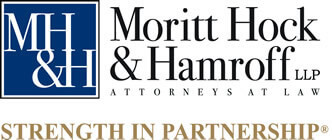EQUIPMENT LESSOR’S DAMAGES CALCULATION RULED UNENFORCEABLE
In a related update, we called attention to risks and pitfalls to lenders and lessors when seeking prepayment premiums and other charges upon the occurrence of an event of default: Lenders Beware: Acceleration May Defeat Right To Prepayment Premium. Here, we look at U.S. Bankruptcy Court Judge Sean Lane’s determination that a liquidated damage clause was not enforceable where it required the lessee to pay the lessor for a decline in the market value of the equipment upon the lessee’s default. The court found it to be a penalty that was void ab initio as it violated public policy. Judge Lane’s decision was notably motivated by the lessor’s inability to similarly transfer such a risk in the absence of a default—i.e., if the lease performed for the full term and the lessor took back the aircraft.
The underlying case, In re Republic Airways Holdings, Inc., 2019 Bankr. Lexis 407 (SDNY 2019), involved Chapter 11 filings by an airline and several subsidiaries. During the case, the debtors rejected certain aircraft leases and retuned the aircraft to the lessor. The amended leases contained a liquidated damage provision often utilized in equipment finance leases that, in the event of a default, required the lessee to pay not only any unpaid rent under the lease but also the difference between the “stipulated loss value (SLV)” of the equipment and the then fair market value of the equipment. However, in the absence of the lessee’s default, the risk of decline in value of the equipment remained with the lessor, and the lessee was simply obligated to return the equipment at the end of the lease term.
The lessor, Wells Fargo Bank Northwest, NA, filed claims against both the primary obligors and guarantor utilizing the liquidated damage provisions. The debtors objected to these claims, arguing both that the actual damages were capable of being calculated and that the liquidated damage provisions and SLV violated public policy.
The court analyzed the “reasonableness” provision in Article 2-A, Section 504, of the UCC, which governs liquidated damage provisions and determined that the risk-shifting liquidated damages provision was unenforceable. The court found that the UCC imposes a reasonableness requirement at the time of the transaction—i.e., there has to be a causal link between the anticipated harm and the act of default. The court found that the liquidated damage provisions were not reasonable for several reasons, including the fact that the leases provided for the unconditional transfer of residual value risk (or market risk) only upon default and without any cognizable connection to the anticipated harm. Here, the court found that the SLV calculations were designed to protect the lessor’s interest in the aircraft—specifically, that there was a very large disparity between the cost of the remaining performance under the leases and the fixed SLVs set forth therein. The court did note that some form of indemnification for risk to residual value is appropriate, “such indemnification can only cover damages or loss to the residual value that is linked to default, rather than by uncorrelated market forces,” or in situations such as casualties or early loss where market shifting might be appropriate.
Finally, the court found that, to the extent the liquidated damage provisions were unenforceable, the lessors were unable to recover those sums under the related unconditional guarantees. The court found that it could void the guarantees even if they were unconditional, as parties cannot waive defenses to agreements where the provisions of that agreement offend public policy.
Given this decision, it is important that clients consider at the lease-drafting stage how they calculate and provide for liquidated damage provisions and, while the goal is to always maximize value, it should not be done in such a way that it undermines the ability to recover damages upon default.
Marc L. Hamroff joined Moritt Hock & Hamroff in 1983 and became a name partner in 1989. He currently serves as the firm’s managing partner. Mr. Hamroff chairs the firm’s Financial Services Practice, which includes the Bankruptcy, Equipment Leasing, Secured Lending, Distressed Assets, and Creditors’ Rights Groups.



